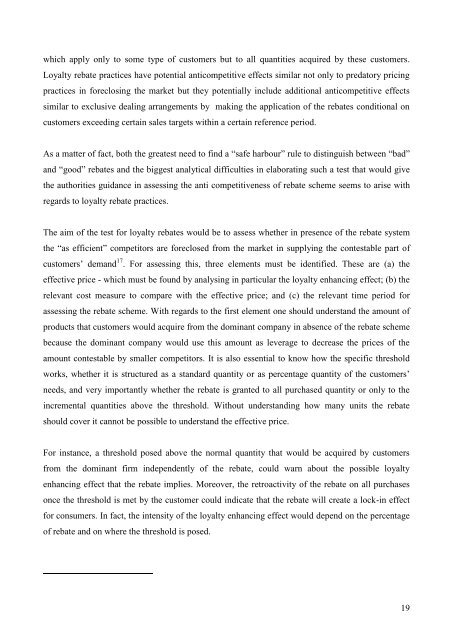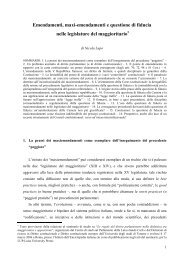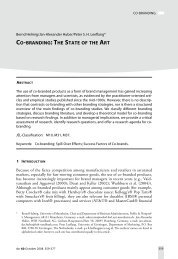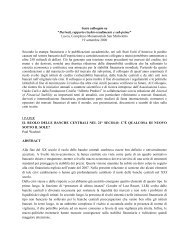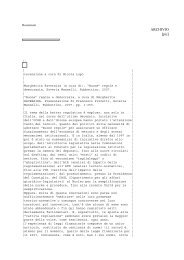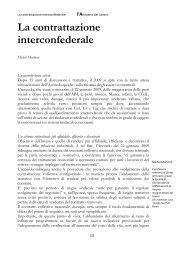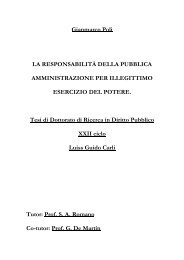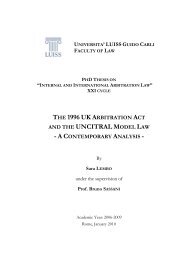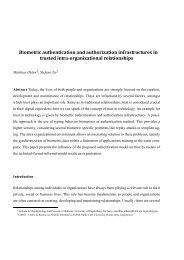The rebates, which consist in granting a lump sum discount to the ...
The rebates, which consist in granting a lump sum discount to the ...
The rebates, which consist in granting a lump sum discount to the ...
You also want an ePaper? Increase the reach of your titles
YUMPU automatically turns print PDFs into web optimized ePapers that Google loves.
<strong>which</strong> apply only <strong>to</strong> some type of cus<strong>to</strong>mers but <strong>to</strong> all quantities acquired by <strong>the</strong>se cus<strong>to</strong>mers.Loyalty rebate practices have potential anticompetitive effects similar not only <strong>to</strong> preda<strong>to</strong>ry pric<strong>in</strong>gpractices <strong>in</strong> foreclos<strong>in</strong>g <strong>the</strong> market but <strong>the</strong>y potentially <strong>in</strong>clude additional anticompetitive effectssimilar <strong>to</strong> exclusive deal<strong>in</strong>g arrangements by mak<strong>in</strong>g <strong>the</strong> application of <strong>the</strong> <strong>rebates</strong> conditional oncus<strong>to</strong>mers exceed<strong>in</strong>g certa<strong>in</strong> sales targets with<strong>in</strong> a certa<strong>in</strong> reference period.As a matter of fact, both <strong>the</strong> greatest need <strong>to</strong> f<strong>in</strong>d a “safe harbour” rule <strong>to</strong> dist<strong>in</strong>guish between “bad”and “good” <strong>rebates</strong> and <strong>the</strong> biggest analytical difficulties <strong>in</strong> elaborat<strong>in</strong>g such a test that would give<strong>the</strong> authorities guidance <strong>in</strong> assess<strong>in</strong>g <strong>the</strong> anti competitiveness of rebate scheme seems <strong>to</strong> arise withregards <strong>to</strong> loyalty rebate practices.<strong>The</strong> aim of <strong>the</strong> test for loyalty <strong>rebates</strong> would be <strong>to</strong> assess whe<strong>the</strong>r <strong>in</strong> presence of <strong>the</strong> rebate system<strong>the</strong> “as efficient” competi<strong>to</strong>rs are foreclosed from <strong>the</strong> market <strong>in</strong> supply<strong>in</strong>g <strong>the</strong> contestable part ofcus<strong>to</strong>mers’ demand 17 . For assess<strong>in</strong>g this, three elements must be identified. <strong>The</strong>se are (a) <strong>the</strong>effective price - <strong>which</strong> must be found by analys<strong>in</strong>g <strong>in</strong> particular <strong>the</strong> loyalty enhanc<strong>in</strong>g effect; (b) <strong>the</strong>relevant cost measure <strong>to</strong> compare with <strong>the</strong> effective price; and (c) <strong>the</strong> relevant time period forassess<strong>in</strong>g <strong>the</strong> rebate scheme. With regards <strong>to</strong> <strong>the</strong> first element one should understand <strong>the</strong> amount ofproducts that cus<strong>to</strong>mers would acquire from <strong>the</strong> dom<strong>in</strong>ant company <strong>in</strong> absence of <strong>the</strong> rebate schemebecause <strong>the</strong> dom<strong>in</strong>ant company would use this amount as leverage <strong>to</strong> decrease <strong>the</strong> prices of <strong>the</strong>amount contestable by smaller competi<strong>to</strong>rs. It is also essential <strong>to</strong> know how <strong>the</strong> specific thresholdworks, whe<strong>the</strong>r it is structured as a standard quantity or as percentage quantity of <strong>the</strong> cus<strong>to</strong>mers’needs, and very importantly whe<strong>the</strong>r <strong>the</strong> rebate is granted <strong>to</strong> all purchased quantity or only <strong>to</strong> <strong>the</strong><strong>in</strong>cremental quantities above <strong>the</strong> threshold. Without understand<strong>in</strong>g how many units <strong>the</strong> <strong>rebates</strong>hould cover it cannot be possible <strong>to</strong> understand <strong>the</strong> effective price.For <strong>in</strong>stance, a threshold posed above <strong>the</strong> normal quantity that would be acquired by cus<strong>to</strong>mersfrom <strong>the</strong> dom<strong>in</strong>ant firm <strong>in</strong>dependently of <strong>the</strong> rebate, could warn about <strong>the</strong> possible loyaltyenhanc<strong>in</strong>g effect that <strong>the</strong> rebate implies. Moreover, <strong>the</strong> retroactivity of <strong>the</strong> rebate on all purchasesonce <strong>the</strong> threshold is met by <strong>the</strong> cus<strong>to</strong>mer could <strong>in</strong>dicate that <strong>the</strong> rebate will create a lock-<strong>in</strong> effectfor con<strong>sum</strong>ers. In fact, <strong>the</strong> <strong>in</strong>tensity of <strong>the</strong> loyalty enhanc<strong>in</strong>g effect would depend on <strong>the</strong> percentageof rebate and on where <strong>the</strong> threshold is posed.19


